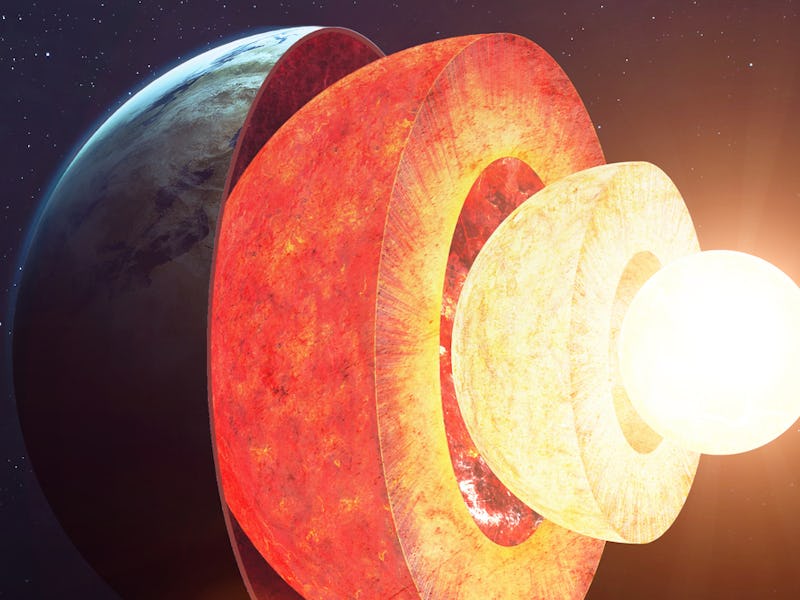Giant Lava Lamp Inside Earth Causes Magnetic Field Reversal
Understanding what happens below the surface.

By Paula Koelemeijer, University of Oxford
If you could travel back in time 41,000 years to the last ice age, your compass would point south instead of north. That’s because for a period of a few hundred years, the Earth’s magnetic field was reversed. Magnetic reversals have happened repeatedly over the planet’s history, sometimes lasting hundreds of thousands of years. We know this from the way it affects the alignment of magnetic minerals, that we can now study on the Earth’s surface.
Several ideas exist to explain why magnetic field reversals happen. One of these just became more plausible. My colleagues and I discovered that regions on top of the Earth’s core could behave like giant lava lamps, with blobs of rock periodically rising and falling deep inside our planet. This could affect its magnetic field and cause it to flip. The way we made this discovery was by studying signals from some of the world’s most destructive earthquakes.
Around 3,000km below our feet — 270 times further down than the deepest part of the ocean — is the start of the Earth’s core, a liquid sphere of mostly molten iron and nickel. At this boundary between the core and the rocky mantle above, the temperature is almost 4,000℃ degrees, similar to that on the surface of a star, with a pressure more than 1.3m times that at the Earth’s surface.
On the mantle side of this boundary, solid rock gradually flows over millions of years, driving the plate tectonics that cause continents to move and change shape. On the core side, fluid, magnetic iron swirls vigorously, creating and sustaining the Earth’s magnetic field that protects the planet from the radiation of space that would otherwise strip away our atmosphere.
Because it is so far underground, the main way we can study the core-mantle boundary is by looking at the seismic signals generated by earthquakes. Using information about the shape and speed of seismic waves, we can work out what the part of the planet they have travelled through to reach us is like. After a particularly large earthquake, the whole planet vibrates like a ringing bell, and measuring these oscillations in different places can tell us how the structure varies within the planet.
New model Earth?
In this way, we know there are two large regions at the top of the core where seismic waves travel more slowly than in surrounding areas. Each region is so large that it would be 100 times taller than Mount Everest if it were on the surface of the planet. These regions, termed large-low-velocity-provinces or more often just “blobs”, have a significant impact on the dynamics of the mantle. They also influence how the core cools, which alters the flow in the outer core.
Several particularly destructive earthquakes over recent decades have enabled us to measure a special kind of seismic oscillations that travel along the core-mantle boundary, known as Stoneley modes. Our most recent research on these modes shows that the two blobs on top of the core have a lower density compared to the surrounding material. This suggests that material is actively rising up towards the surface, consistent with other geophysical observations.
New explanation
These regions might be less dense simply because they are hotter. But an exciting alternative possibility is that the chemical composition of these parts of the mantle cause them to behave like the blobs in a lava lamp. This would mean they heat up and periodically rise towards the surface, before cooling and splashing back down on the core.
Such behaviour would change the way in which heat is extracted from the core’s surface over millions of years. And this could explain why the Earth’s magnetic field sometimes reverses. The fact that the field has changed so many times in the Earth’s history suggests that the internal structure we know today may also have changed.
We know the core is covered with a landscape of mountains and valleys like the Earth’s surface. By using more data from Earth oscillations to study this topography, we will be able to produce more detailed maps of the core that will give us a much better understanding of what is going on deep below our feet.
By Paula Koelemeijer, Postdoctoral Fellow in Global Seismology, University of Oxford
This article was originally published on The Conversation. Read the original article.